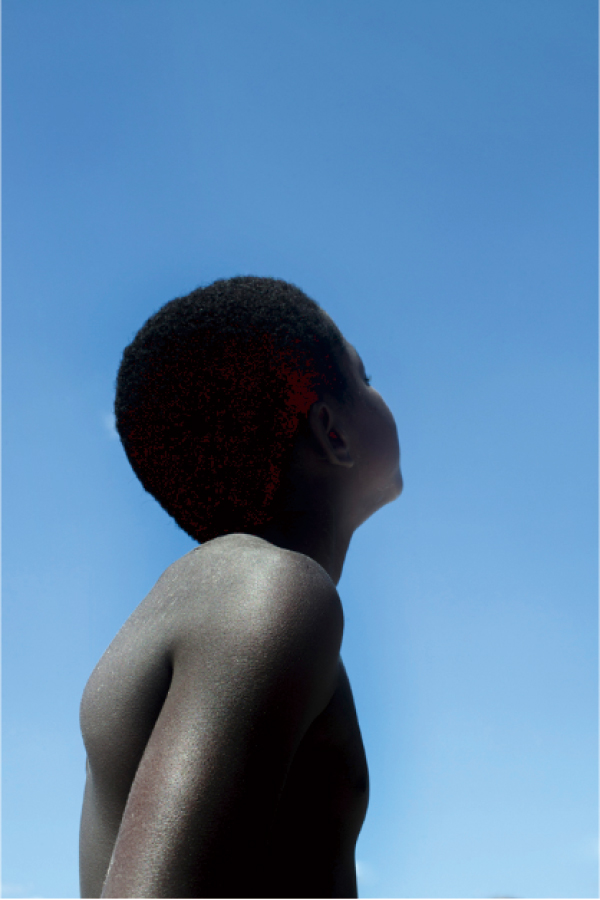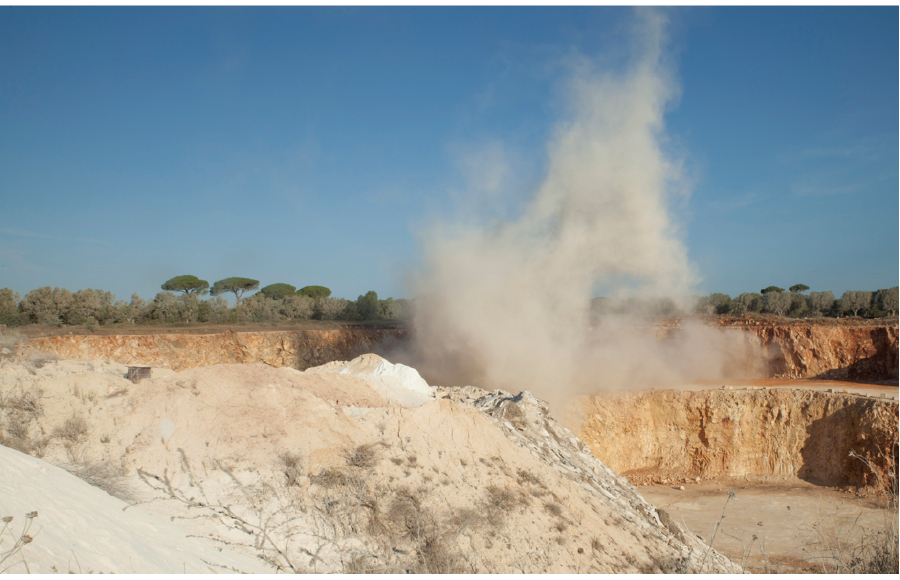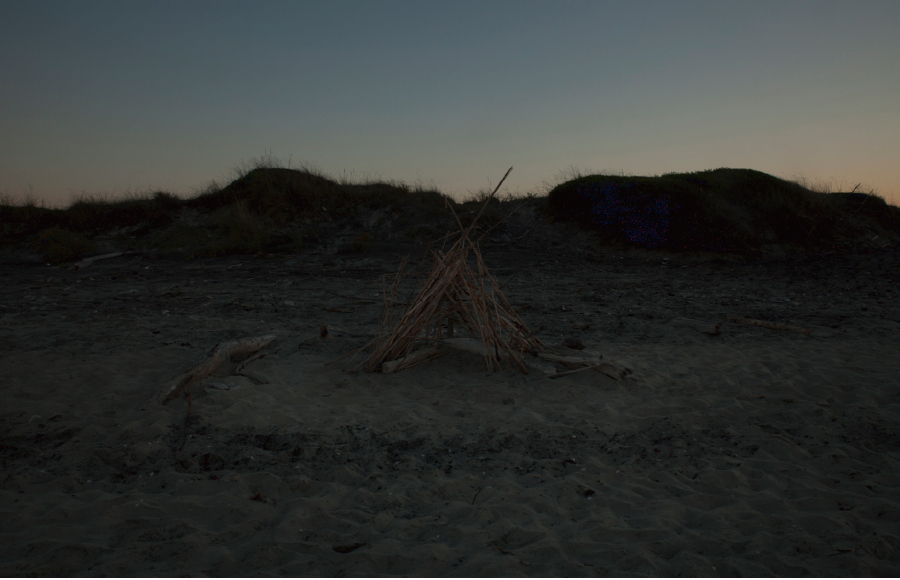Alessia Rollo

Known for illusory and powerful works, Alessia Rollo is one of the most remarkable photographers in the Italian and international photography scene of the moment. Her latest photographic
series “Fata Morgana” is composed of conceptual works but in other hand can be documentary works focused on Immigration issues.
“I work with photography since 2009 and my projects investigate quite always the relationship between objects, human habits and society. I mix up really different photographic languages and
category because I believe there is not a unique point of view to tell the reality and I prefer to make it clean in my practice thought the fragmentation of my photographic vision.
-Alessia Rollo
幻想的かつ印象深い作品で知られるアレシア・ロッロは、現在 母国イタリアだけでなく世界でもっとも注目すべき写真家の一人です。彼女の最新シリーズ「Fata Morgana(蜃気楼)」は、コンセプチュアルでありながら、
一方で移民問題に焦点を当てたドキュメンタリーの要素も持つ作品群となっています。
「私は2009年から写真家として仕事をしており、自分のプロジェクトにおいては、常に 物体と人間の習性そして社会の相互関係を探究しています。私は現実をそのまま伝えるということに面白い視点はないと考えているの
で、異なる分野のものを写真とミックスしています。そして実践においては、自分の思い描く写真を視覚化することでそれを純粋な作品にしたいと思っています。」
ーアレシア・ロッロ



INTERVIEW
– Firstly, will you tell us how you started Photography?
I started taking pictures when I moved to Ireland after University. At the time my English was quite bad, so I could not speak that much with people: I was wondering I could get familiar with a new
country and communicate my sensations. I remembered I have a simple film camera with me, a present from my friends for my degree. I started to take pictures of the places I was going: I took the
camera with me when I felt alone and I discovered that camera is a great friend and a way to know a bit more about yourself.
– まずはじめに写真を始めたきっかけを教えていただけますか?
私は、大学卒業後アイルランドへ行った時に写真を始めました。当時私の英語力は乏しく、現地の人々とあまり会話ができませんでした。どうしたらもっと新しい国に馴染むことができるのか、自分の感情を伝えることがで
きるのか悩みました。
私はその時、簡素なフィルムカメラを持っていました。友達からの卒業祝いのプレゼントです。私はそのカメラで行く先々の写真を撮り始めました。一人で寂しいときは、いつもカメラを持ち歩き、カメラが自分をより良く
知るための素晴らしい友達だと感じるようになりました。


– Where is the main base of your current activity as a photographer?
Actually I live and work in a countryside house in Salento, South Italy. Sometime I move for specific projects but I love to be here.
– 写真家としての現在の活動の拠点はどちらですか?
私は南イタリアのサレントという田舎町にある家で暮らし、仕事をしています。時々、プロジェクトの為に移動しますが、ここでの生活がとても好きです。


– What is the source of inspiration for your photography?
Since I was a child I has been always really curious about small objects and small happenings in the world that surrounded me. I think I still like this very much and I get a lot of inspiration from
coincidences, accidents or fortuity discovering.
Whatever is out of a strict order and control is attracting for me. I feel me invited to recreate new meanings, to complete something that escape from a human interpretation. What in literature is
called “magic realism”, this mix of reality, extra-ordinary and surreal elements it’s the source of all my projects. Of course, I read books and I see exhibitions too: sometime artworks create big
splash of creativity in my mind.
– あなたの写真制作におけるインスピレーションは何ですか?
私は子供の頃から、小さな物や周りで生じる小さな物事に対してとても興味を持っていました。私は今だにそう行ったことが大好きで、偶然や事件や幸運を発見することからインスピレーションを得ているのだと思います。
厳格な命令と支配、それ以外の全ての物が私にとっては魅力的なのです。私は自分が、人間の解釈から逃れる何かを完成させるために、新しい意味を造り直すよう誘われているのではないかと感じます。文学では「魔法のリ
アリズム」と呼ばれるものがあります。これは現実と異常かつ超現実的な要素をミックスさせたものです。それが私のすべてのプロジェクトの源です。
もちろん、私は本も読むし展覧会なども鑑賞します。時折、芸術作品が私の中に大きな創造力の波を吹き込んでくれることがあります。

-You have studied Photography and worked in Perugia, Spain and it seems that you are currently based in Salento, Italy..,but why did you choose Spain to study and work in the field of
photography?
After my degree in Communication in Perugia I was really lost about what I want to be as an adult. I was divided between science and art: in Ireland I discovered I liked photography and to be
sincere after one year and half in Dublin I was fed up with the weather and I’ve choose to study seriously photography, but in a warm country. So, I’ve ended up in Madrid, a fantastic city that I loved
really a lot and gave me so many in term of career and human relationships.
I’ve attended a Master in Conceptual photography at Efti School, and a work there as well during 4 years. I’ve learn so much from both experiences. That’s why I’m still connected with Madrid and I
keep going there for work or pleasure.
– スペインのペルージャで写真を学び仕事の経験もし、現在はSalentoをベースに仕事をされているようですが、写真を学び仕事とする上で スペインを選ばれたのはなぜですか?
ペルージャでコミュニケーション学を専攻した後、私は大人として何をしたいのかわからず迷っていました。科学と芸術の狭間で悩んでいたのです。アイルランドで写真が好きなのだと気がつき、ダブリンで一年半過ごした
後、どこか暖かい国で真剣に写真を続けようと決めました。正直にいうと、ダブリンの天候にはうんざりしていたんです。そして、マドリードに決めたわけですが、そこは本当に素晴らしい大好きな街で、キャリアに関して
も人間関係にしても私に多くの経験を与えてくれました。私はマドリードにある写真の学校EFTIに通いコンセプチュアルフォトグラフィーを学びました。そしてそこで4年間仕事もしました。双方の経験から多くを学びま
した。ですから、私はまだマドリードと繋がっていますし、今後仕事だけでなく楽しむためにも訪れたい場所なのです。



-Fata Morgana is “Mirage” when literally translated, can you tell us why you chose this title and the genesis of this project?
The Fata Morgana is visible from my region in the southern part of Italy, Salento, and it gives the illusion to see Albanian mountains from the Adriatic Sea: but to me it represents a powerful
metaphor of contemporary geopolitical situation.
Salento, like all of Europe, has recently become a false place of wonder and hope for people who are fleeing from Africa or Meddle East: but the pictures taken by photo-reporters and showed on
newspapers often reduce migrants lives and histories to few and common stereotypes. This project represents my willingness to create a visual complexity around these topics so relevant in
the contemporary European scenario but as well to think about the role of photographers, which are powerful producers of meanings, ideas and opinions.
– Fata Morganaは直訳すると蜃気楼という意味ですが、このタイトルを選ばれた理由、またこのプロジェクトを始めたきっかけを教えていただけますか?
蜃気楼は私の住んでいる南イタリアのサレントで見ることができます。それは、アドリア海から見るアルバニア山脈の錯覚を与えてくれます。しかし、それは私にとっては、現代の地政学的状況に対する鋭い隠喩(メタファ
ー)を表していると感じられます。サレントは他のヨーロッパの都市と同じように、近年アフリカや中東から逃れてくる人々にとって希望と奇跡を期待する偽りの場所となっています。しかし、記者が撮影した写真や新聞に
掲載された写真は、たいてい移民の生活や歴史を固定観念や先入観を通して伝えてしまいます。このプロジェクトは、現代のヨーロッパの概要に関連したこのような話題を、視覚的に捉えその複雑性を創造するという
私自身の意欲を表しています。また同時に、意義や思想・意見などの力強い創造者としての写真家の役割をも表しています。

-I read that Photographs in Fata Morgana series were taken in Salento region, in which there is your hometown Lecce. I feel your attachment to your hometown from these images…is there any
specific reason why you are committed to your hometown?
It’s a really good question indeed. When I was younger I felt a big distance between the place I was born and myself: that’s why I’ve spent 11 years out of my region or out of Italy to be precise. In the
last times I understood that I feel much more“authentic” being here. I have the sensation I can think more and in a deeper way. Something I like as well for the creative process: everything looks like
more crystallin. I see now that my projects are connected with existential needs. Maybe it’s the quietness of the countryside, the lack of so many things that distracted me when I was living in
cities, the primitive power of nature.
– Fata Morganaシリーズは、Salento地方で撮影されたとのことですが、ここはあなたの生まれたLecceのある場所でもありますね。写真からは故郷への愛着のようなものも感じられますが、地元にこだわる理由は何か
ありますか?
これは大変良い質問ですね。私は幼い頃、生まれた場所と自分自身の間に大きな隔たりを感じていました。だからこそ、正確に言うと11年もの間、自分の故郷を そして故国イタリアを出て 過ごしたのです。最終的には、私
はここにいることが自分の“真正”なのだと理解するようになりました。ここでは、私はもっと より深く考える事が出来る様な気がします。クリエイティブなプロセスのために私がやりたいこと、全てがまるで結晶の様に輝
いて見えます。今は、自分のプロジェクトが実際のニーズと結びついていることがわかりました。おそらくそれは田舎の静寂、大都市に住んでいた時に自分の気を散らした様な多くのものがないこと、自然の原始的な力なの
だと思います。


– What it the most important thing to you in producing works?
For sure is the creative process before to start a project. I’m really interested in the research time I spend before shooting and as well in the critical moments: often when I start taking pictures I feel
me stuck and I don’t know how to go ahead. In these moments I learn a lot about myself, about what I’m doing and how to use photography to shape my vision on reality.
Photography is my way to understand myself and to perceive the world that surround me.
– 作品制作において最も重要だと考えていることは何ですか?
もちろんそれは、プロジェクトを始める前のクリエイティブなプロセスであると思います。私は、評価をしてもらう時と同様に、撮影前のリサーチの時間がとても興味深いと考えています。写真を撮り始めると、よく行き詰
まることがあり、どうしたら良いのかわからなくなることがあります。こういった瞬間に、私は自分自身についてや自分がやっていること、そして実際に自分のビジョンを形作るためにどの様に写真を用いるのかということ
について、多くのことを学ぶのです。写真は、私にとって自分自身を理解し自分を取り巻く世界を理解する手段なのです。


– Do you have any particular preference regarding cameras (equipment) you use?
I started shooting with an analogic camera 35mm and during 4 years I shoot just in film. After I move to a digital equipment and now I use both! Medium format camera, a Mamiya7 I really love and
a digital one. Depending from the projects I decide what it fit more: each camera has its own aesthetic.
– 使用しているカメラ機材にこだわりはありますか?
私は、35mmのアナログカメラで写真を始めました。そして4年間フィルムだけで撮影していました。その後デジタル機器の使用に移り、今現在は両方使用しています。私の好きなマミヤ 7というフィルムカメラと、デジタ
ルカメラの2つです。プロジェクトによって、どちらがより合うかを決めています。どちらも独自の魅力があります。


– Is there any artist or photographer that has inspired your works?
I think a lot of inspiration come from Italian Renaissance painters or sculptors, for the colors they used, the soft light, the way they composed scene and shaped bodies. This is my cultural heritage,
the unconscious one. When I’ve started to study I’ve admired a lot Giorgio Morandi an Italian painter that for all his life painted almost monochrome objects like simple bottles or glasses: Taryn
Simon for her ability to mix science, anthropology, contemporary issue in such a great way: Gabriel Orozco for his ironic look to the reality and Viviane Sassen for her superb use of colors, light and
composition.
– 自身の作品に影響を与えたアーティストやフォトグラファーはいますか?
私は、多くのイタリアルネッサンス期の芸術家たちからインスピレーションを得ていると思います。彼らの使用していた色や、優しい光の表現、場面や人物を構成する方法などからです。これは私が無意識に持っている文化
遺産なのだと思います。写真を学び始めた頃から、イタリア人画家ジョルジオ・モランディを尊敬しています。彼はシンプルなボトルやグラスの作品をモノクロで描きました。それからアメリカのアーティスト タリン・サイ
モン、彼女は科学や人類学を現代のものと素晴らしい方法で融合させています。メキシコ人アーティスト ガブリエル・オロスコの現実に対する皮肉な表現も面白いし、オランダの画家ヴィヴィアン・サッセンの色や光の使い
方と構成も素晴らしいです。


– Are you interested in Japan? Any Japanese Artist or photographer you know?
Japan is a mystery and fascinated place for me. When I was a child I remember I had some fairy-tale books with a lot of Japanese drawings, really beautiful. I mix up this old-time aesthetic with a
modern vision that came from movies and photography. I would like so much to visit Japan to see how far is my imagination from reality!
There are many Japanese photographer I like a lot like Hiroshi Sugimoto, Rinko Kawauchi, Araki, Daido Moriyama and Masao Yamamoto, the writer Haruki Murakami or Banana Yoshimoto,
the painter Katsushika Hokusai and the film director Takashi Shimura.
– 日本に興味がありますか?知っている日本人アーティストもしくは写真家はいますか?
日本は私にとって神秘的で魅力的な場所です。子供の頃とても美しい日本の挿絵が描かれた童話の本を何冊か持っていました。
私は、映画や写真から得られる日本の現代的なビジョンをこの昔の美学とミックスして考えています。日本に行って、私の想像が現実とどれほどかけ離れているのかを確かめたいです。日本の写真家でとても好きなのは、杉
本博司、川内倫子、荒木経惟、森山大道、山本昌男です。作家では村上春樹、吉本バナナ、また画家の葛飾北斎や映画監督の志村喬が好きです。
– Please tell us if you have something you want to do in the future or any project you already have in mind.
At the moment I’m working at a project I will develop between Italy and Ethiopia: I’m putting together a story of my family and a piece of Italian history. Again, it’s about coincidences: it’s always
something that look not really significant that attract me. The rest I will discover it once I will be there.
– 今後やってみたいことや、すでに考えているプロジェクトなどがあれば教えてください。
今は、イタリアとエチオピアに関するプロジェクトに取り掛かっています。私自身の家族の物語とイタリアの歴史の断片を繋ぎ合わせています。それは偶然繋がったりもします。私を惹きつけるものが、いつもはそんなに重
要には思えないものだったりします。その場所に行けばすぐに残りの断片が見つかるでしょう。


Alessia Rollo (1982- Lecce, Italy)
A conceptual photographer, Alessia Rollo graduated in Communication Sciences in Italy and in 2009 she received a Master in “Creative Photography” at the EFTI school in Madrid, where she
participated in numerous workshops with international artists such as Jill Greenberg, Danis Darzacq, Matt Siber, James Casebere and Mary Hellen Mark. She has participated in solo and group
exhibitions in Italy, Spain and Brazil: she was selected in 2011 for the international artist residency Default. Recently she was chosen among the finalists of the LensCulture Awards 2018. She lives
and works in Salento, south Italy.
1982年イタリアのレッチェ生まれ。イタリアのコミュニケーション・サイエンスを卒業したコンセプチュアル・フォトグラファーで、2009年にはマドリードのEFTI校にて「Creative Photography」のマスターを取得、
またJill Greenberg, Danis Darzacq, Matt Siber, James CasebereやMary Hellen Markなど国際的アーティストたちとのワークショップに数多く参加。イタリア、スペイン、ブラジルでは個展とグループ展を開催し、
2011年には国際アーティストの居住地のデフォルトとして選ばれる。先日、LensCulture Awards2018のファイナリストにも選出された。現在、南イタリアの町サレントに在住し、制作活動を続けている。


